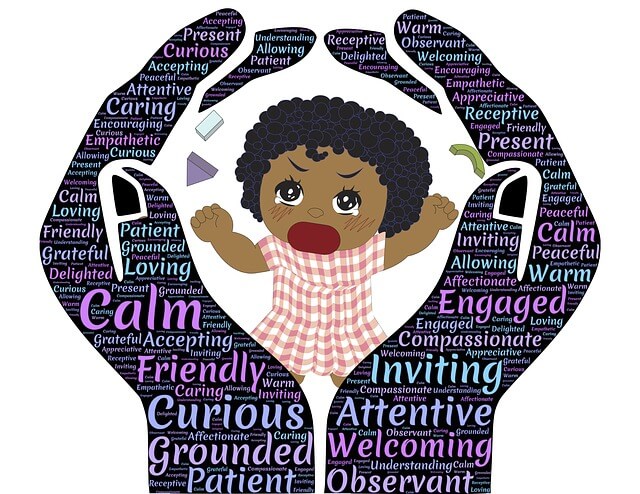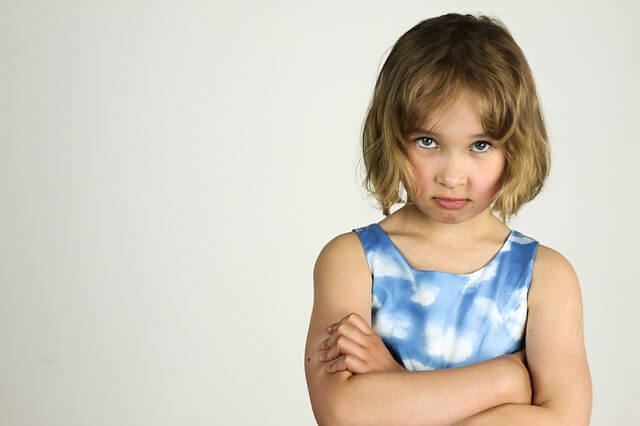10 Games that Help Children Control Rage

A small child’s emotions, just as those of an adult, can reach the point of being like a roller coaster where anger and frustration are given free reign. In those moments, parents need to help children learn to control rage. But how?
Why is rage so difficult to control?
We cannot deny that society has become more and more in favor of not repressing our emotions, but allowing our frustrations to flow freely. As a result, we have less and less self-control and self-discipline.
As we well know, children learn through observing the behaviors of the people around them, especially their own family members. Therefore, it is especially important to control our own rage as a tool to control our children’s rage. This sets a good example.
“In our permissive culture, adults and children constantly hear messages that we should do whatever we want“
-David Walsh-
According to experts, if we don’t start doing this work with our children, we won’t just find ourselves embarrassed when they have fits of rage in public or in our homes. The consequences will be much worse than that. We will be impeding certain changes in their neurons that are associated with developing a solid and mature character in the future.
Learning to control rage through play
Through games, we can get a lot further with our little ones than we think. Games can be a healthy and fun way to start refining the personalities and the emotions of our children.

We can prepare and act out scenes with our children showing what may happen in school when a classmate bothers them, or when things don’t go the way they want. How will they react? Will they be able to control their rage? By asking your children how they would react in those moments, we as parents can get an idea of how they are progressing.
“Anger is a wind which blows out the lamp of the mind”
-Robert G. Ingersoll-
10 ways to help with self-control
- The first tool you can give your child, and the most important tool, is one we mentioned above: The example of his parents. It has been demonstrated that our bodies contain what are called “mirror neurons.” The function of these neurons is to imitate what happens around us. For example, if we are the first to react in a calm manner, our children will be grateful and will react in the same way.
- Create your own anti-stress toy. Your child can create it himself in order to control his rage, like an anti-stress squeeze ball. For example, placing one balloon inside another, and then filling them with rice. He can even personalize it by writing his name on it.
- Along with your child, create a circle of options to help her control her rage. For example, a board with various things she can choose to do if she is able to control her emotions.
- Studies show that touching water or sand can be relaxing during times when a child is angry. Therefore, we can prepare a container of water so our child can place his hands inside it and make circles or shapes to help him relax.
- Create an image with keywords and place it in his room in plain sight. For example, you can make a traffic light which relates each of the colors with a behavior. Red: Stop and think before you act. Yellow: Take caution and think about the consequences. Green: Move ahead and behave correctly.
- Set aside a space in your home where your child can spend a few minutes to calm down. This may be her bedroom or some place that is especially decorated for her for the purpose of relaxing.
- Blow bubbles in the air. The purpose of this method, or game, is to help your child control his breathing and therefore, control his anger.

- Listen to relaxing music. This will help put your child into a good mood.
- Breathing control. By inflating and deflating her abdomen, your child will be able to control her breathing, which will help her relax.
- Read stories and children’s books where your child can identify with the main character. This will help your child detect when they have had a good or a bad behavior.
A small child’s emotions, just as those of an adult, can reach the point of being like a roller coaster where anger and frustration are given free reign. In those moments, parents need to help children learn to control rage. But how?
Why is rage so difficult to control?
We cannot deny that society has become more and more in favor of not repressing our emotions, but allowing our frustrations to flow freely. As a result, we have less and less self-control and self-discipline.
As we well know, children learn through observing the behaviors of the people around them, especially their own family members. Therefore, it is especially important to control our own rage as a tool to control our children’s rage. This sets a good example.
“In our permissive culture, adults and children constantly hear messages that we should do whatever we want“
-David Walsh-
According to experts, if we don’t start doing this work with our children, we won’t just find ourselves embarrassed when they have fits of rage in public or in our homes. The consequences will be much worse than that. We will be impeding certain changes in their neurons that are associated with developing a solid and mature character in the future.
Learning to control rage through play
Through games, we can get a lot further with our little ones than we think. Games can be a healthy and fun way to start refining the personalities and the emotions of our children.

We can prepare and act out scenes with our children showing what may happen in school when a classmate bothers them, or when things don’t go the way they want. How will they react? Will they be able to control their rage? By asking your children how they would react in those moments, we as parents can get an idea of how they are progressing.
“Anger is a wind which blows out the lamp of the mind”
-Robert G. Ingersoll-
10 ways to help with self-control
- The first tool you can give your child, and the most important tool, is one we mentioned above: The example of his parents. It has been demonstrated that our bodies contain what are called “mirror neurons.” The function of these neurons is to imitate what happens around us. For example, if we are the first to react in a calm manner, our children will be grateful and will react in the same way.
- Create your own anti-stress toy. Your child can create it himself in order to control his rage, like an anti-stress squeeze ball. For example, placing one balloon inside another, and then filling them with rice. He can even personalize it by writing his name on it.
- Along with your child, create a circle of options to help her control her rage. For example, a board with various things she can choose to do if she is able to control her emotions.
- Studies show that touching water or sand can be relaxing during times when a child is angry. Therefore, we can prepare a container of water so our child can place his hands inside it and make circles or shapes to help him relax.
- Create an image with keywords and place it in his room in plain sight. For example, you can make a traffic light which relates each of the colors with a behavior. Red: Stop and think before you act. Yellow: Take caution and think about the consequences. Green: Move ahead and behave correctly.
- Set aside a space in your home where your child can spend a few minutes to calm down. This may be her bedroom or some place that is especially decorated for her for the purpose of relaxing.
- Blow bubbles in the air. The purpose of this method, or game, is to help your child control his breathing and therefore, control his anger.

- Listen to relaxing music. This will help put your child into a good mood.
- Breathing control. By inflating and deflating her abdomen, your child will be able to control her breathing, which will help her relax.
- Read stories and children’s books where your child can identify with the main character. This will help your child detect when they have had a good or a bad behavior.
All cited sources were thoroughly reviewed by our team to ensure their quality, reliability, currency, and validity. The bibliography of this article was considered reliable and of academic or scientific accuracy.
- Alcázar Olán, R. J. (2012). Tipos de ira en niños. https://repositorio.iberopuebla.mx/bitstream/handle/20.500.11777/1987/Tipos+de+Ira+en+los+Niños.pdf?sequence=1
- Sukhodolsky, D. G., Kassinove, H., & Gorman, B. S. (2004). Cognitive-behavioral therapy for anger in children and adolescents: A meta-analysis. Aggression and violent behavior, 9(3), 247-269. https://www.sciencedirect.com/science/article/abs/pii/S1359178903000727
- Kerr, M. A., & Schneider, B. H. (2008). Anger expression in children and adolescents: A review of the empirical literature. Clinical psychology review, 28(4), 559-577. https://www.sciencedirect.com/science/article/abs/pii/S0272735807001365
- Garrison, S. R., & Stolberg, A. L. (1983). Modification of anger in children by affective imagery training. Journal of Abnormal Child Psychology, 11(1), 115-129. https://link.springer.com/article/10.1007/BF00912182
This text is provided for informational purposes only and does not replace consultation with a professional. If in doubt, consult your specialist.








